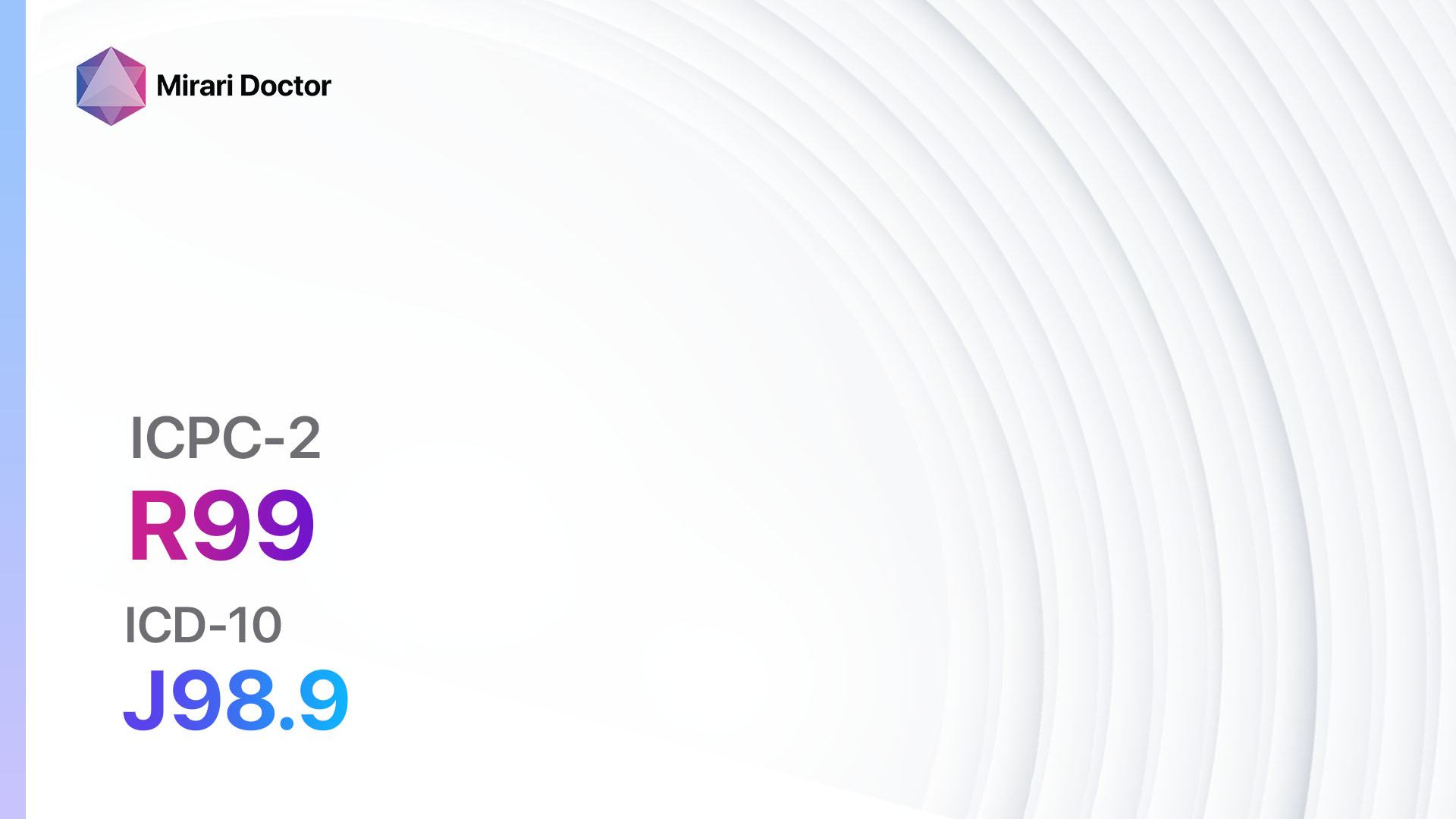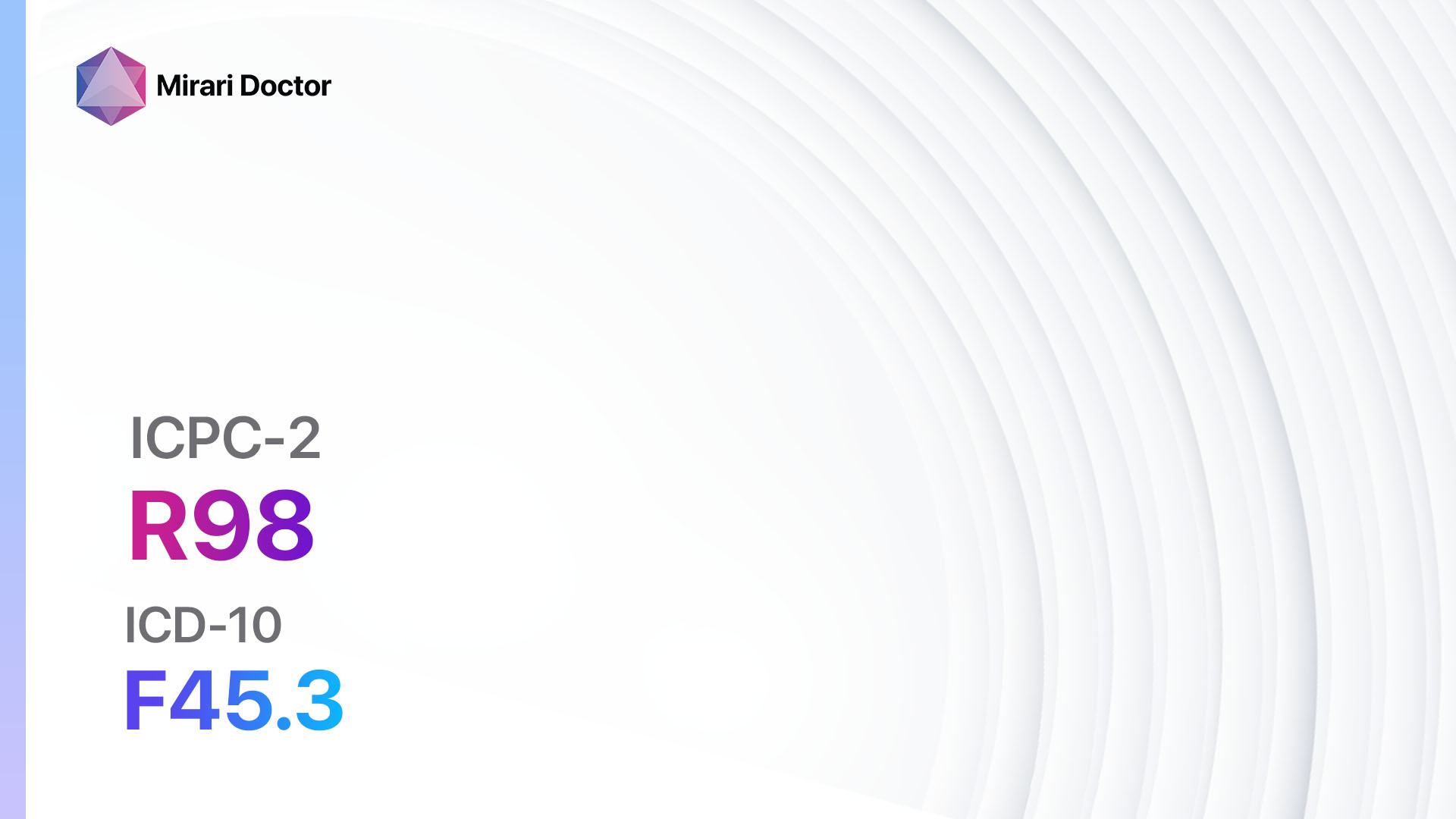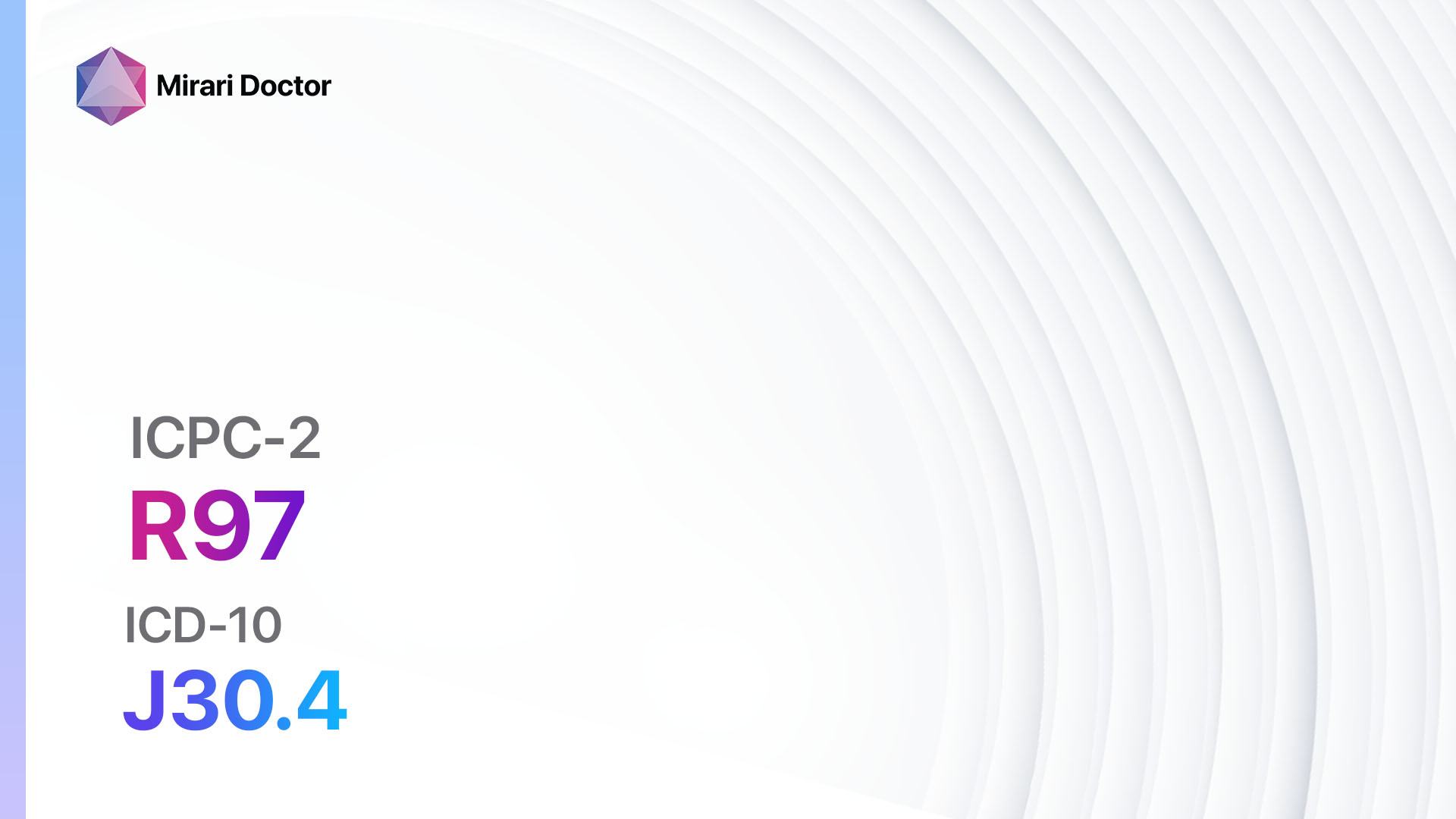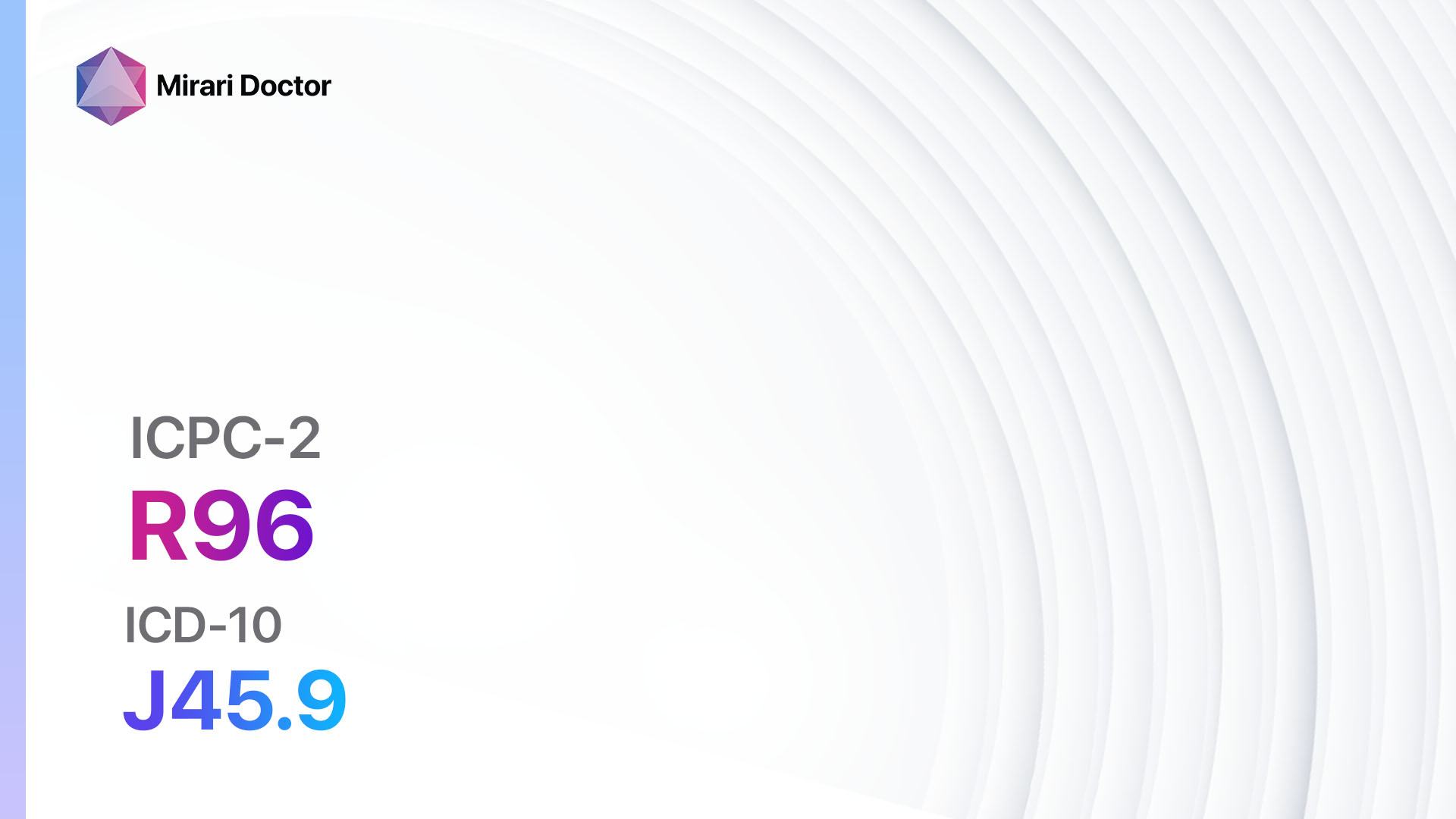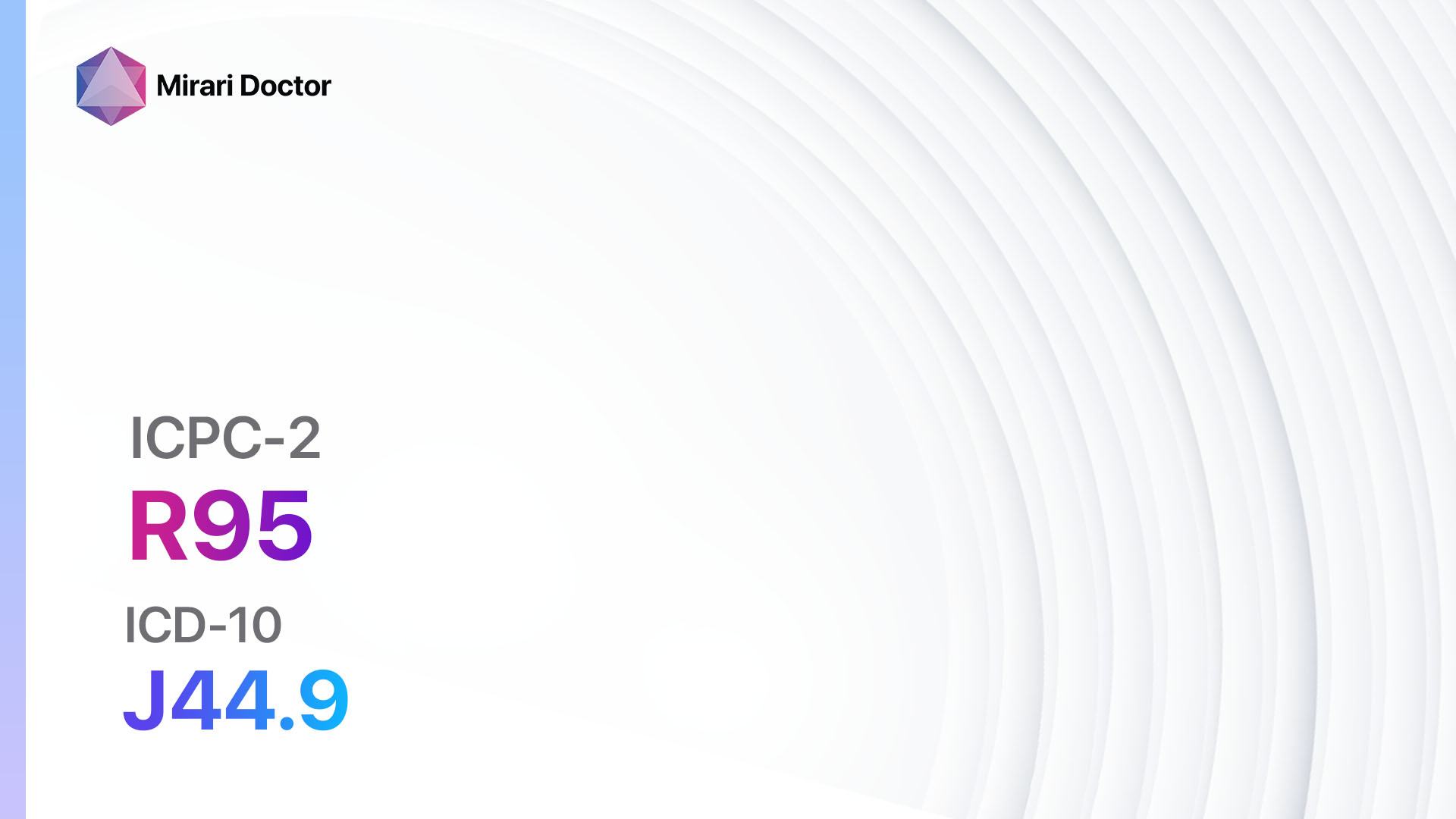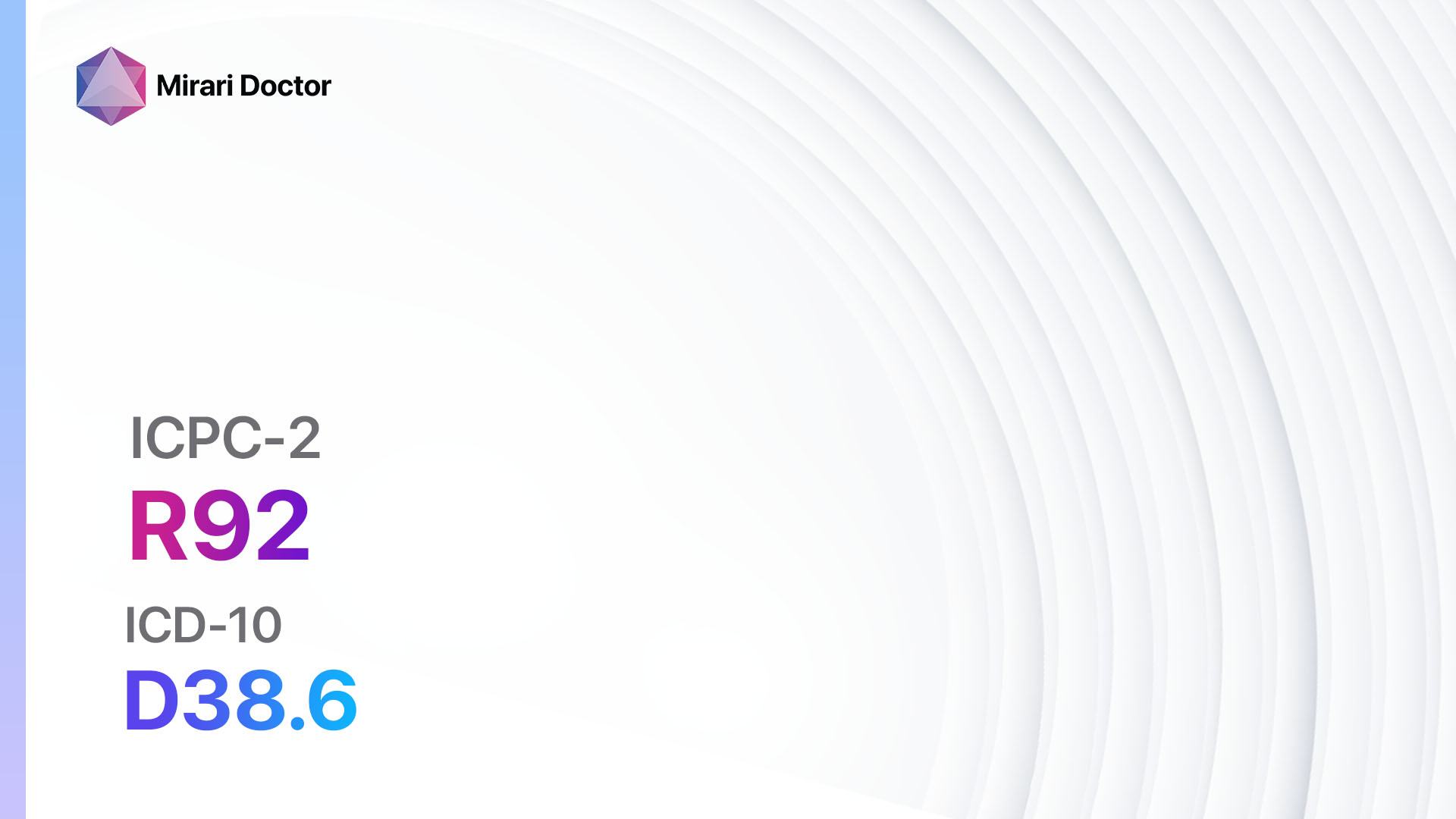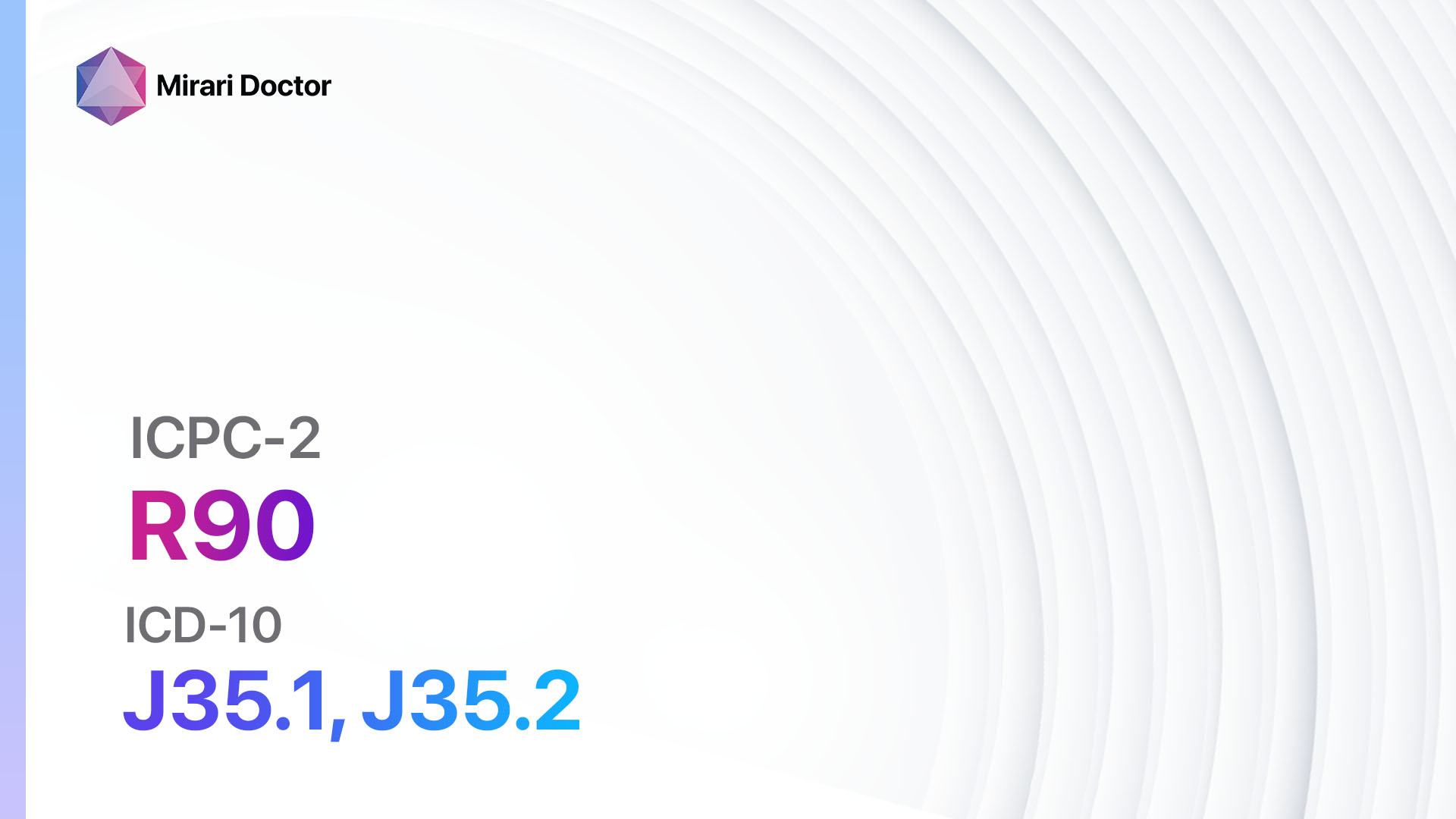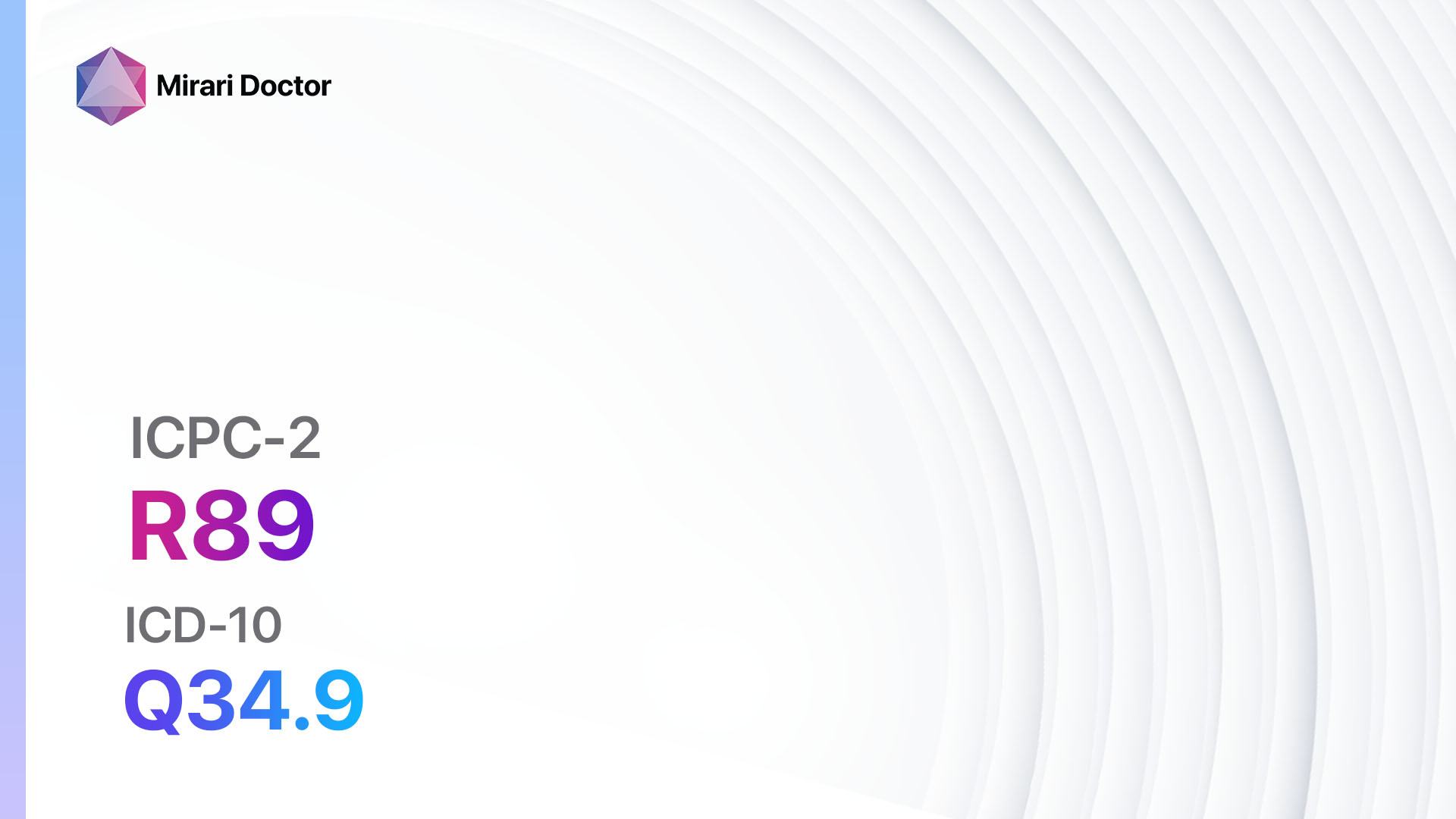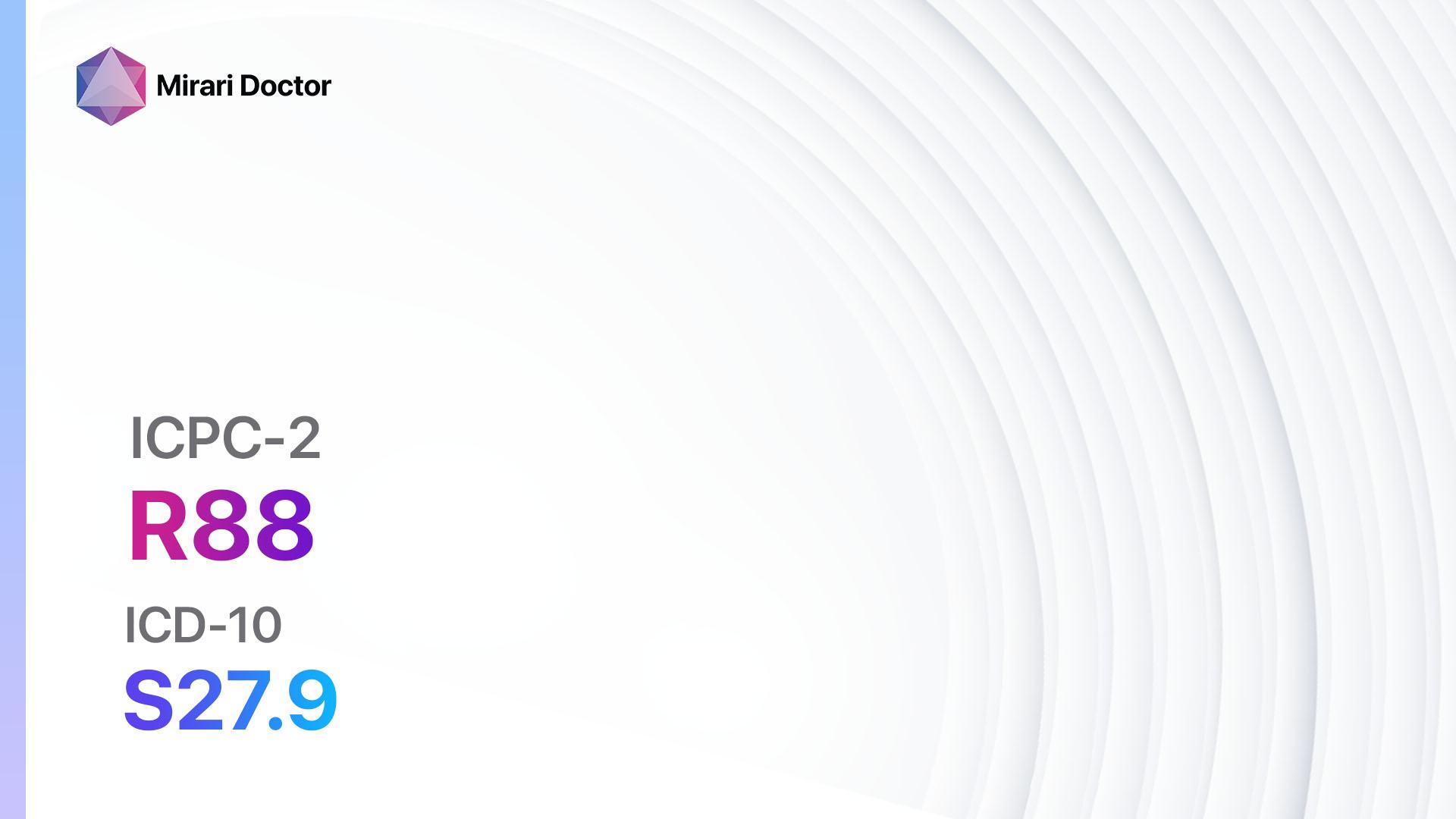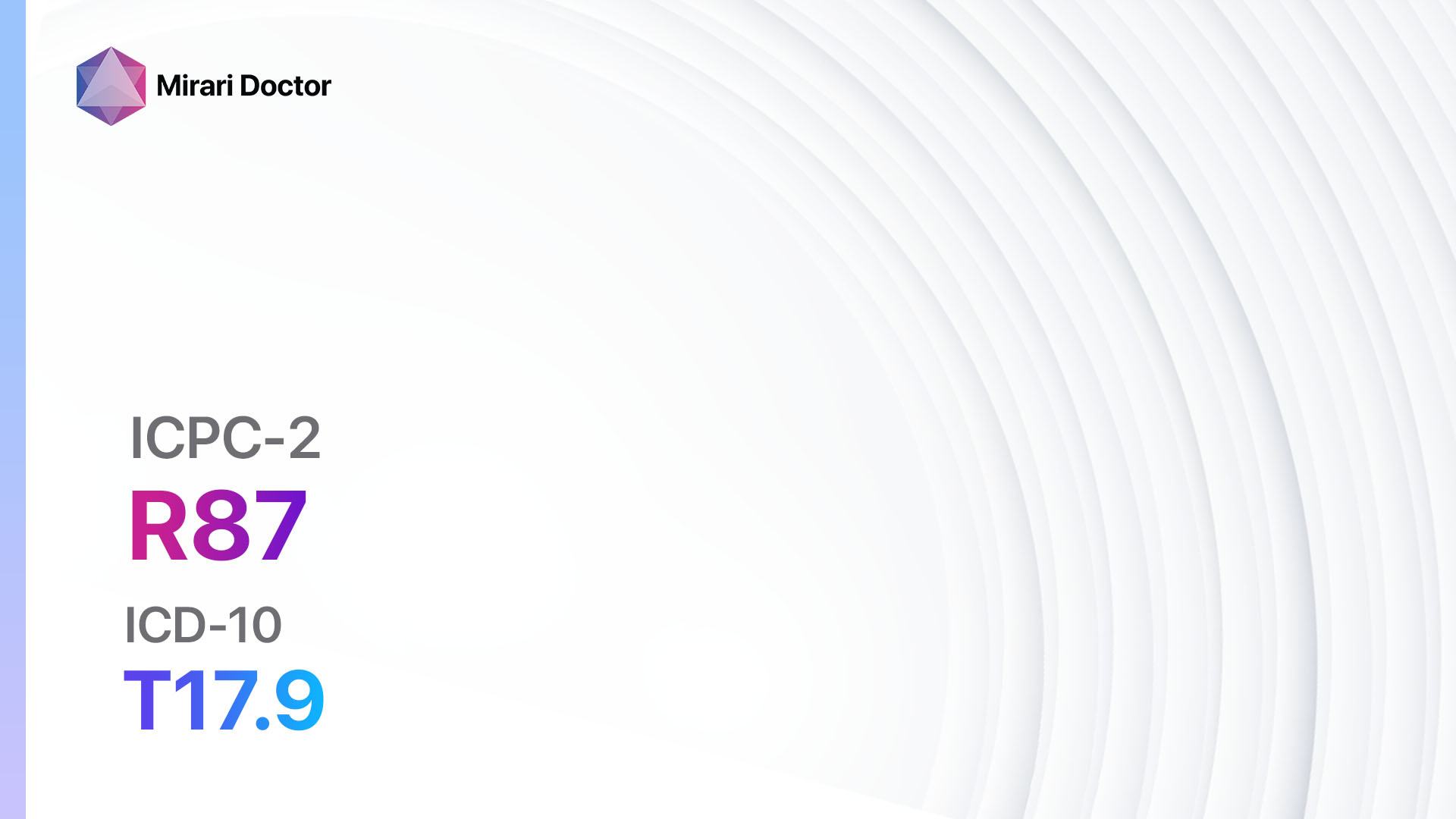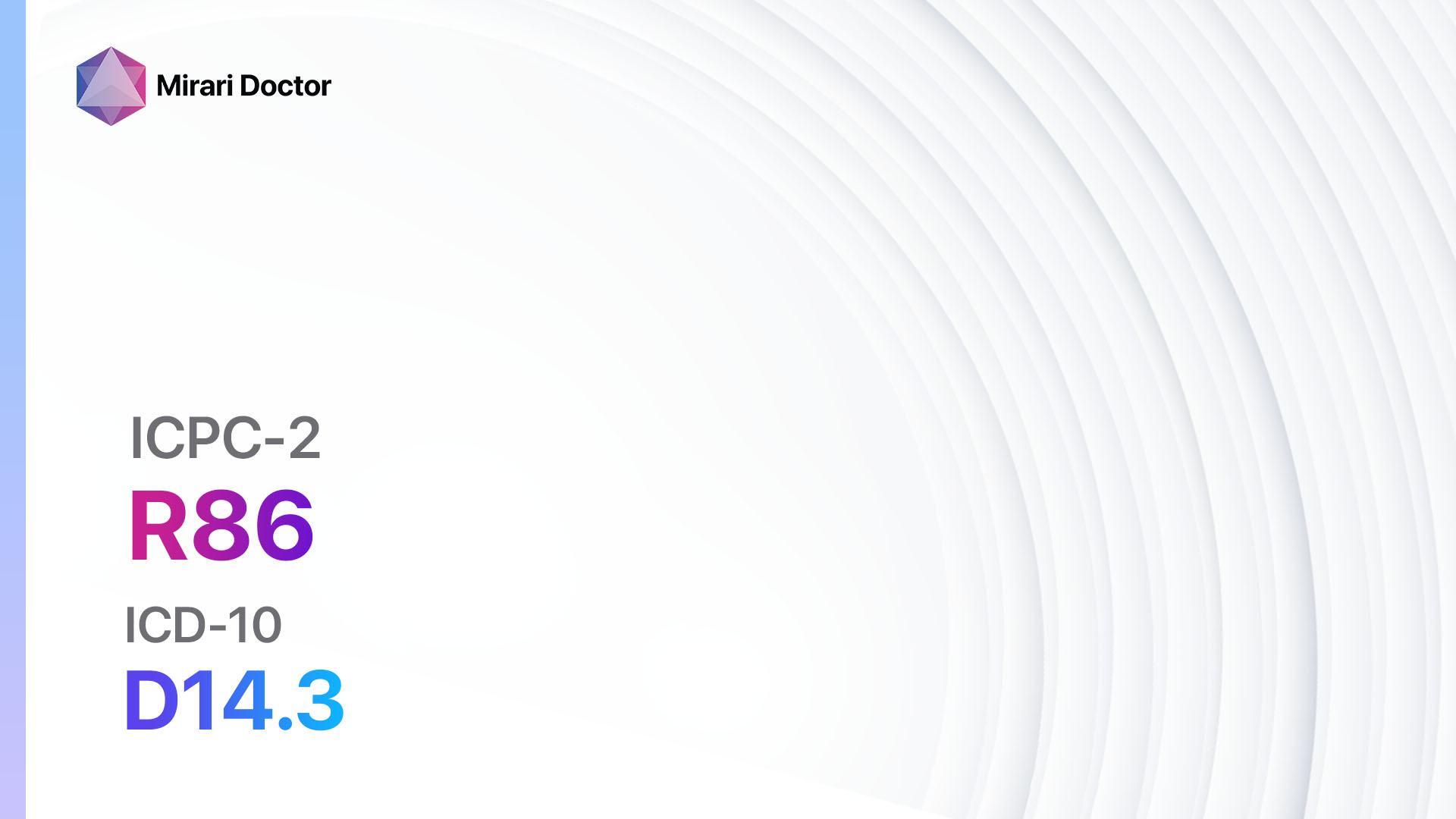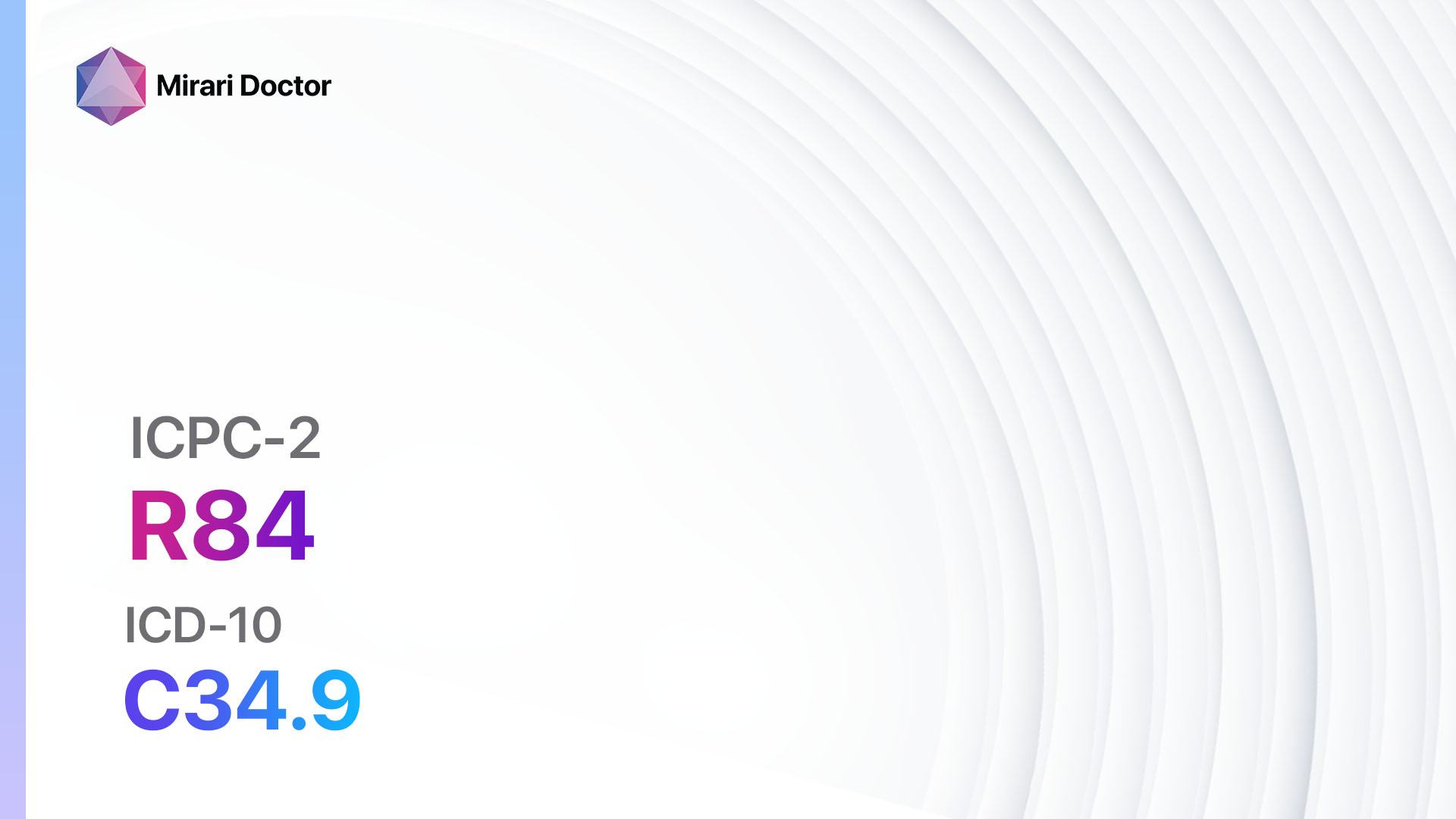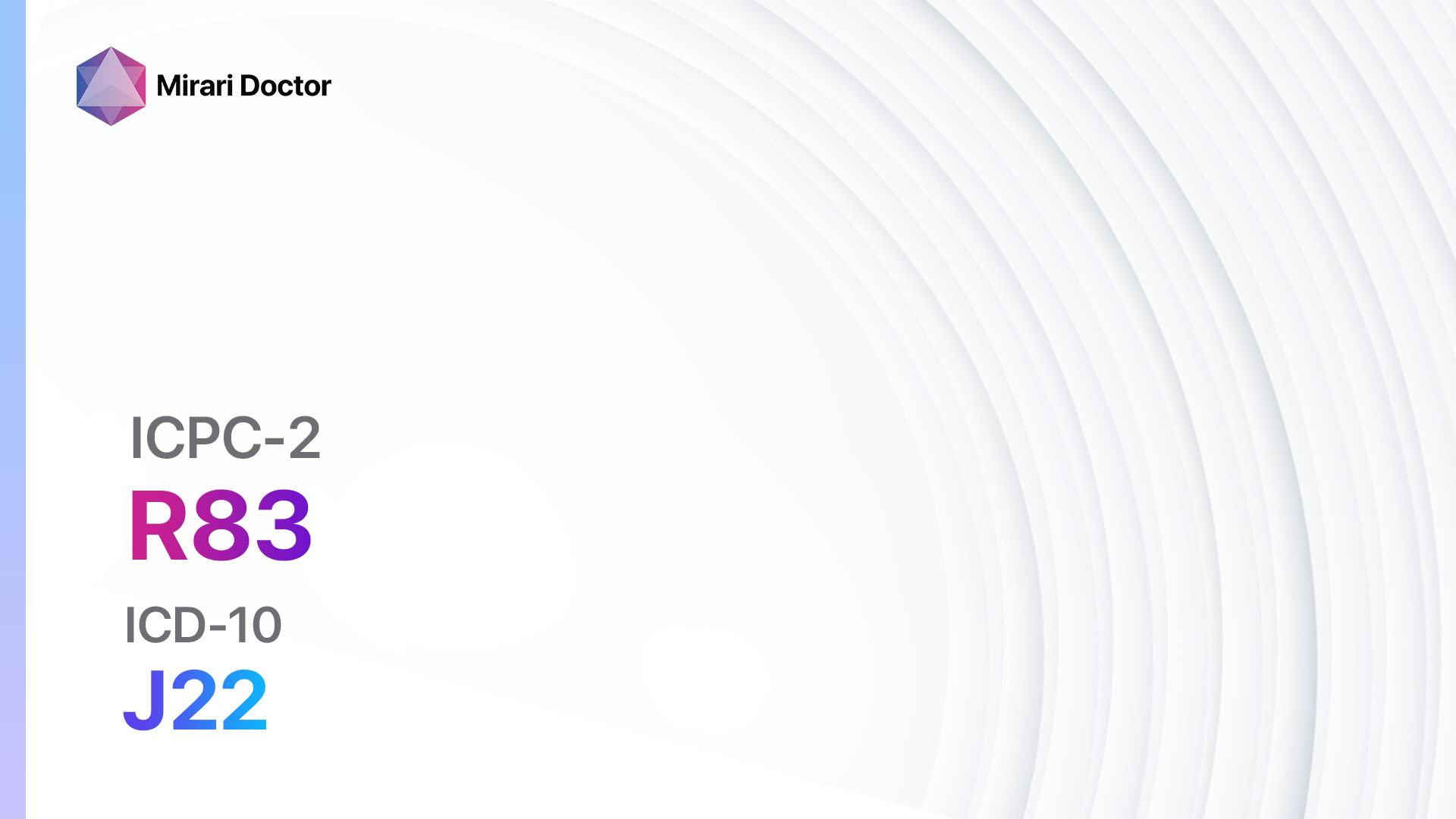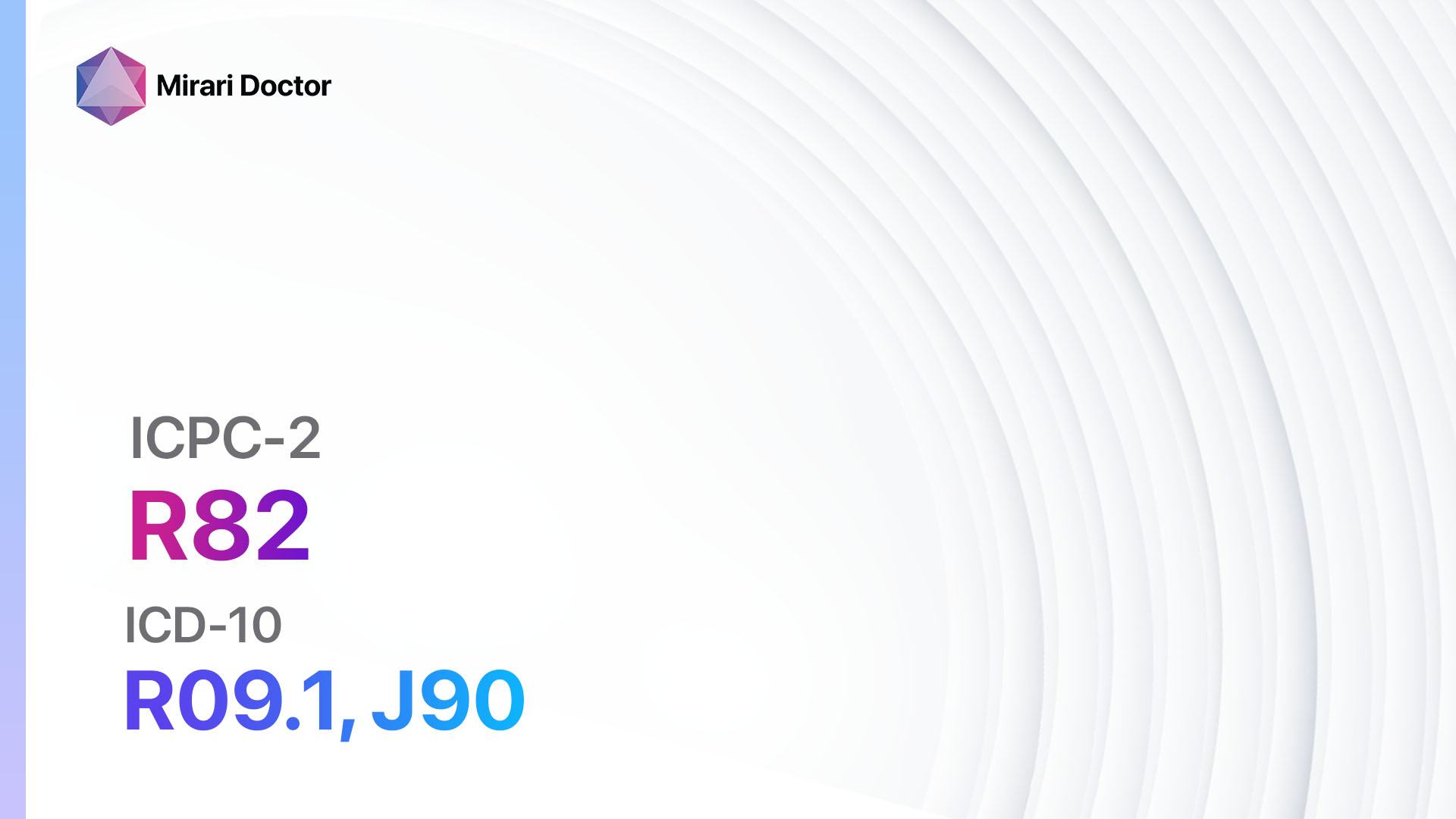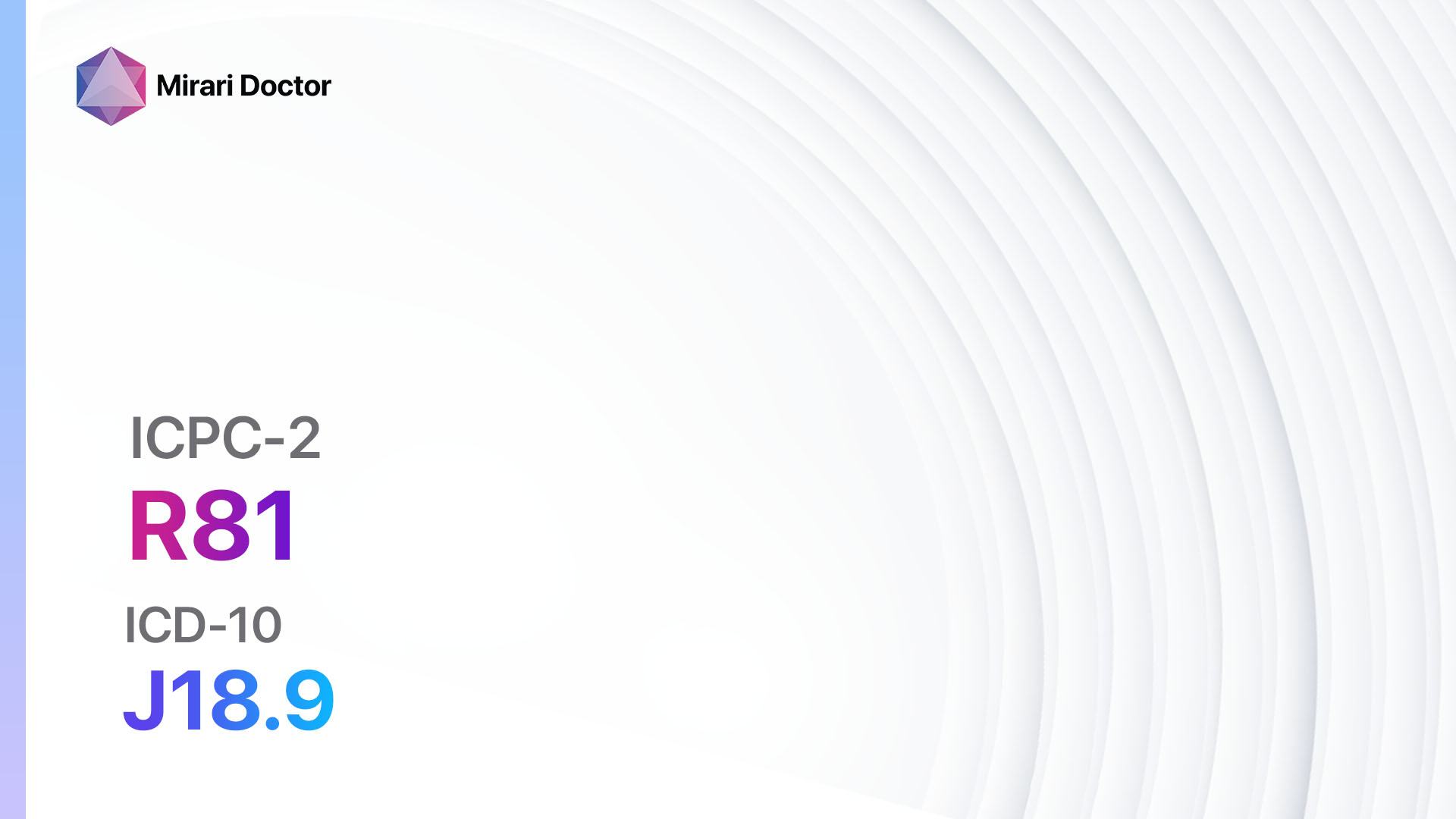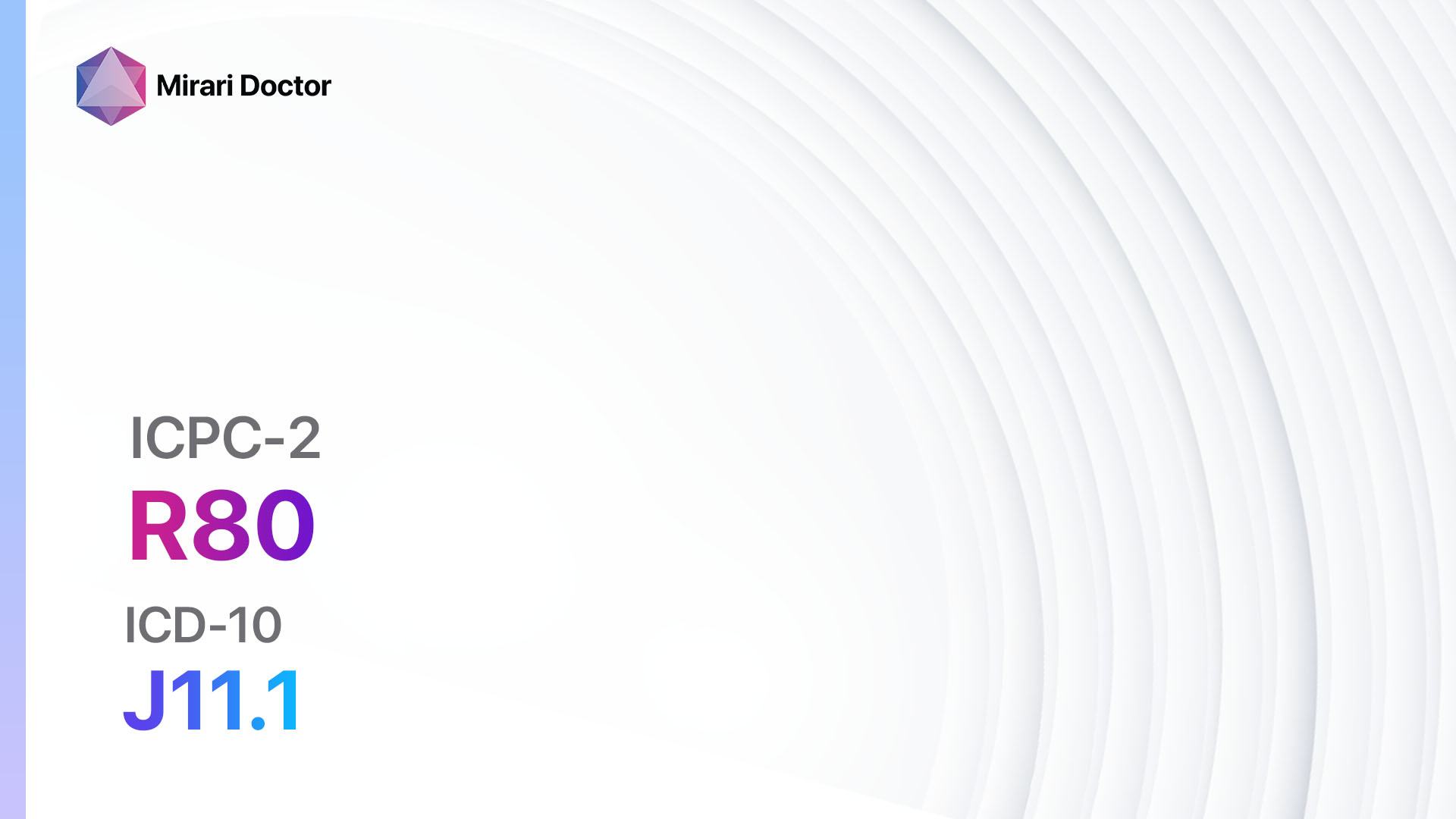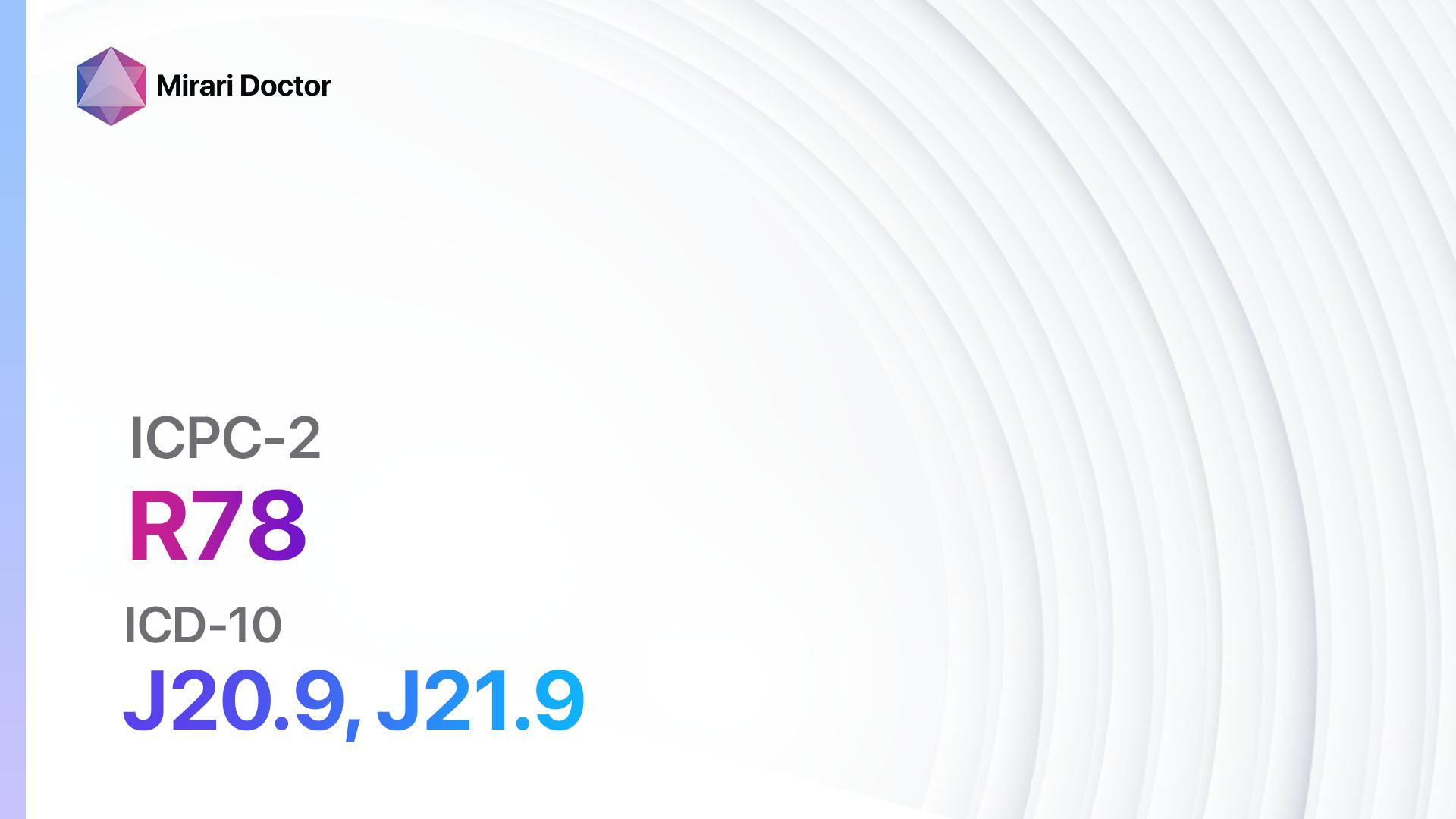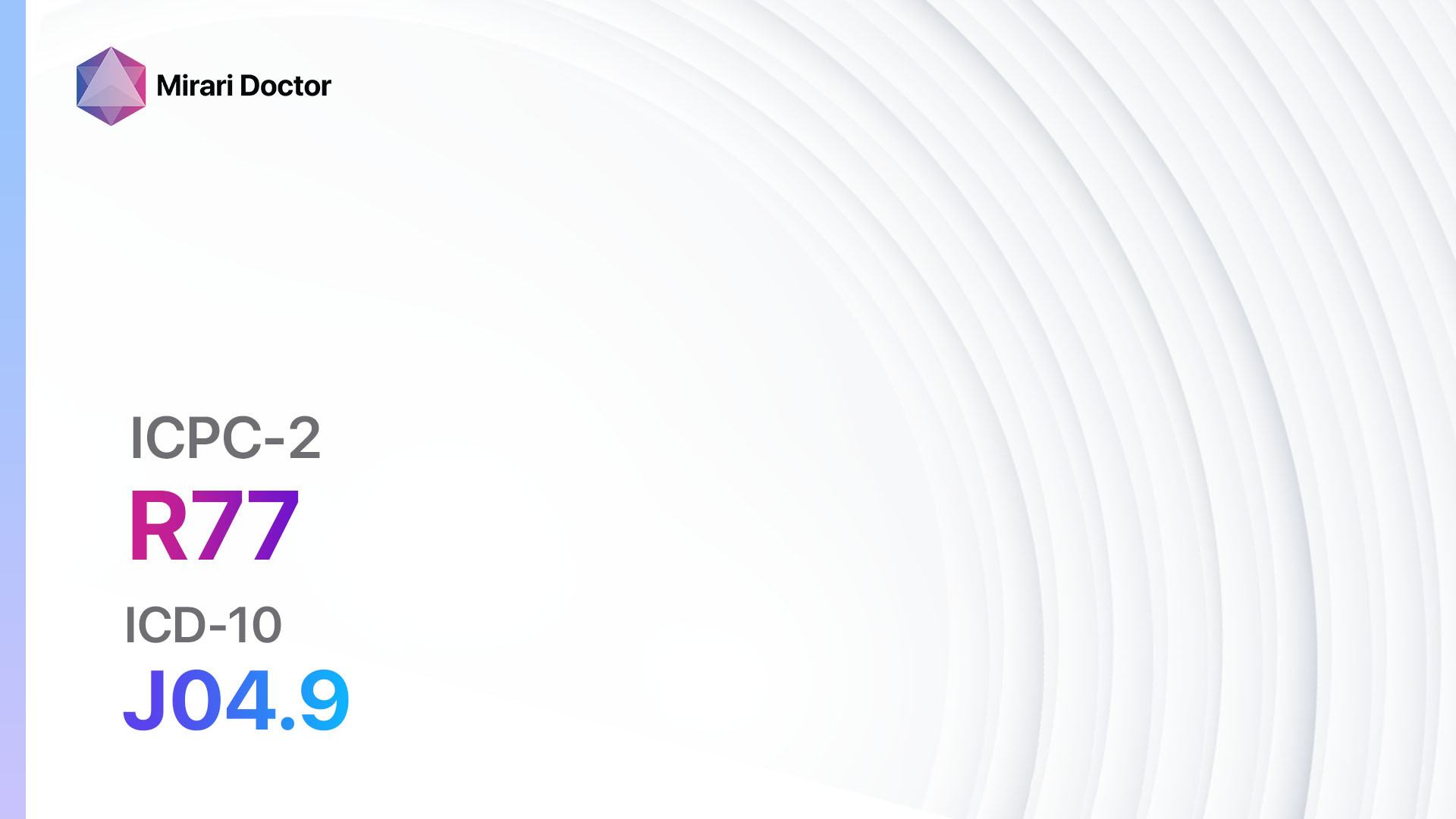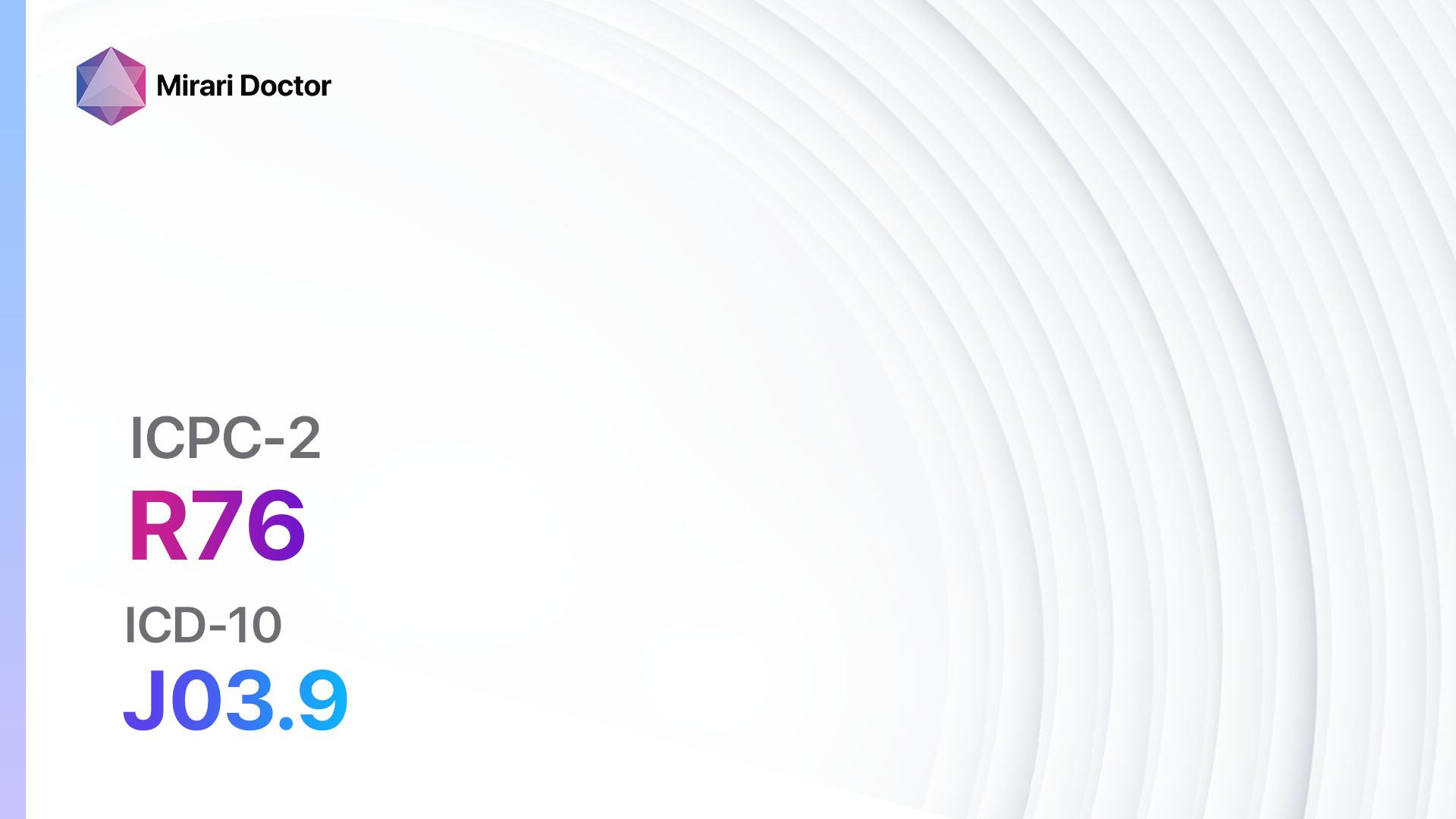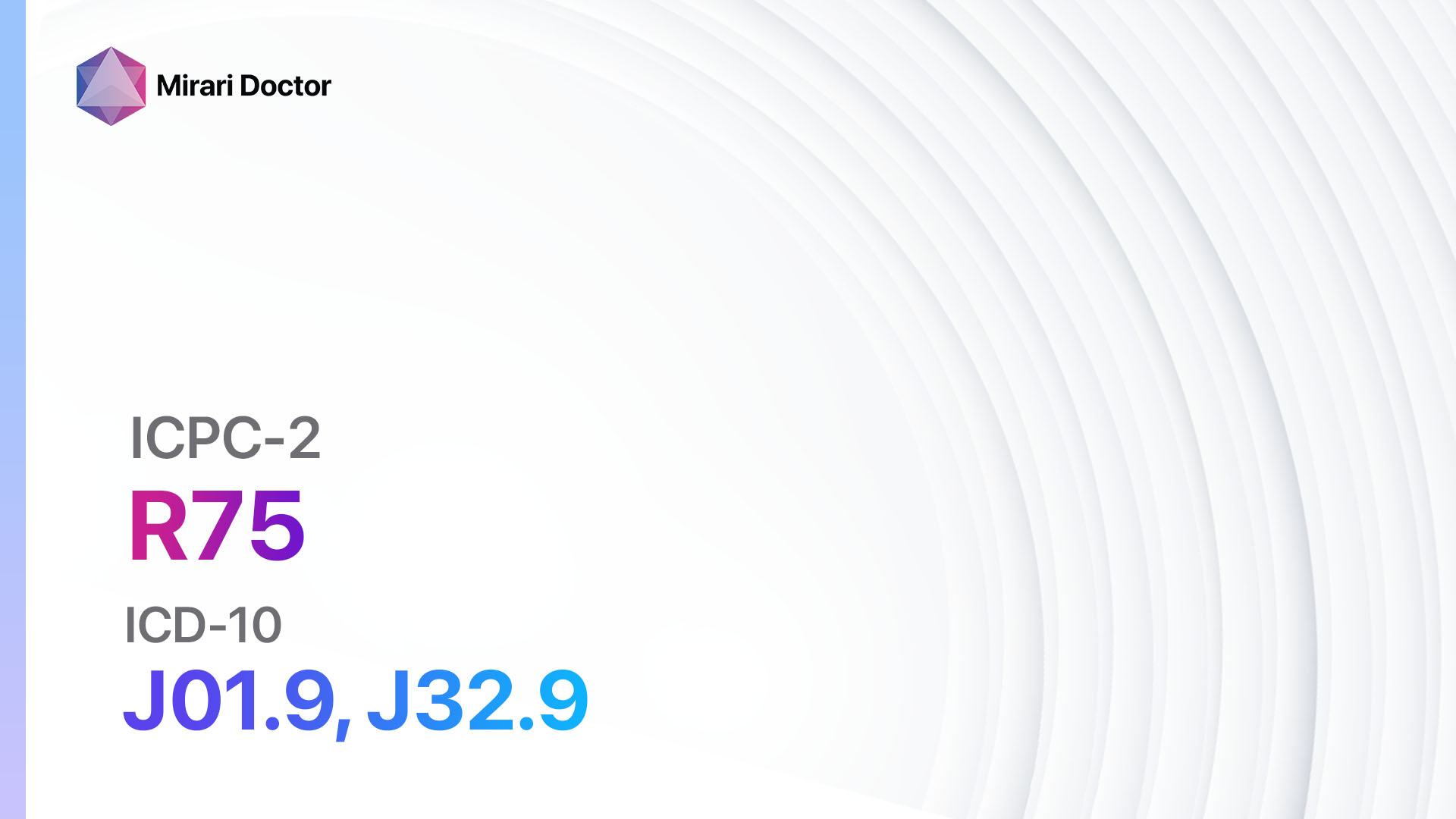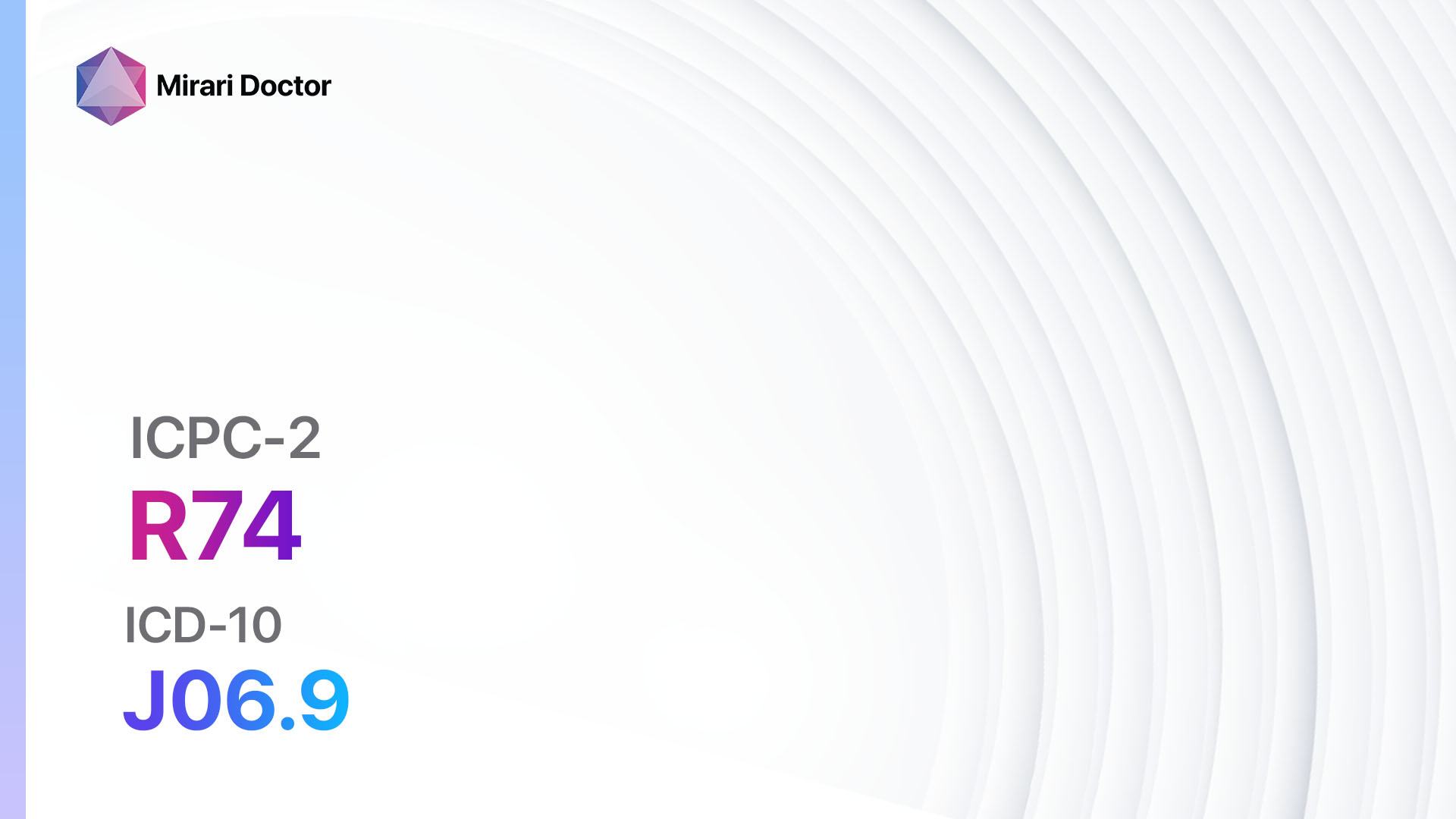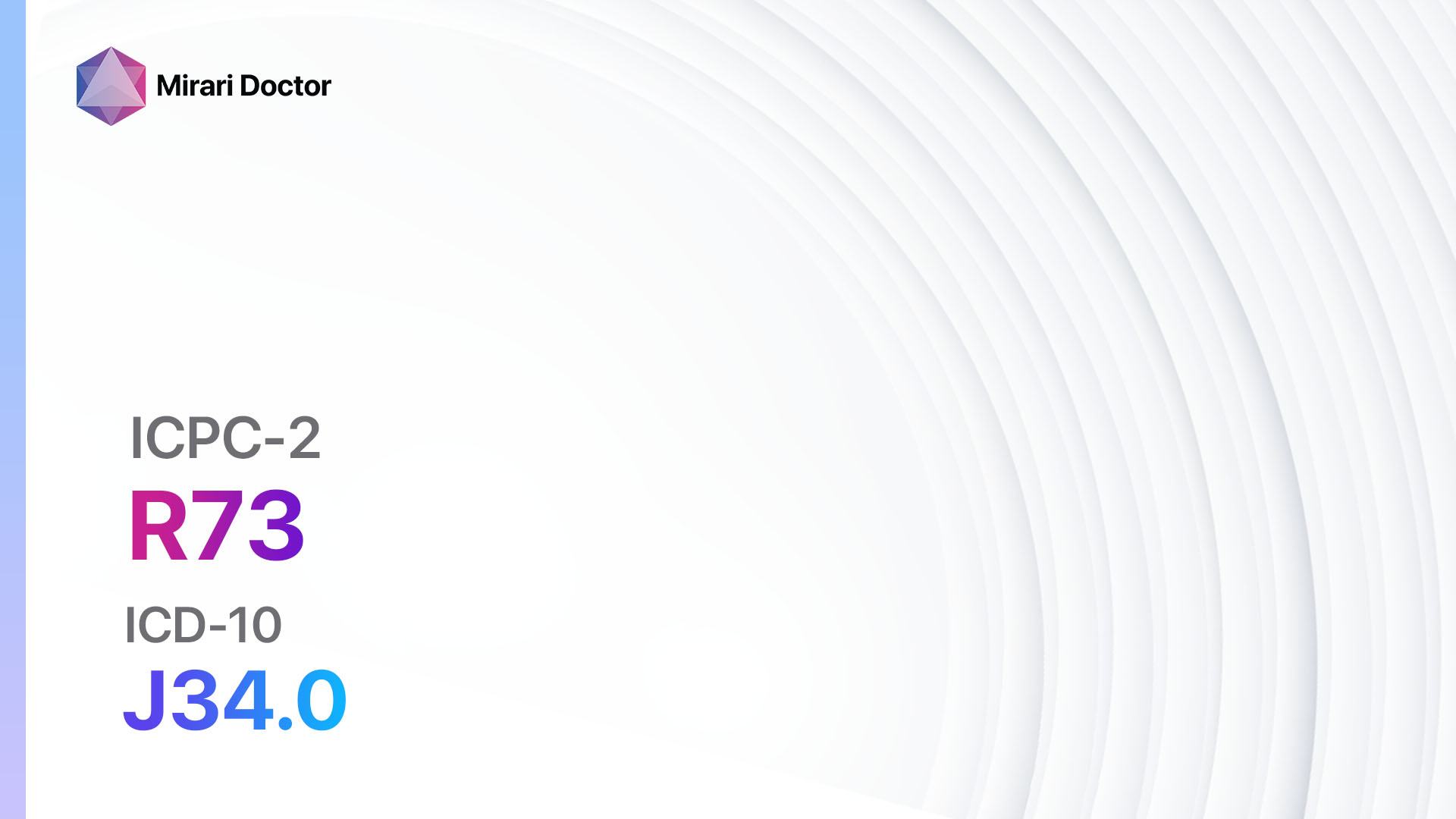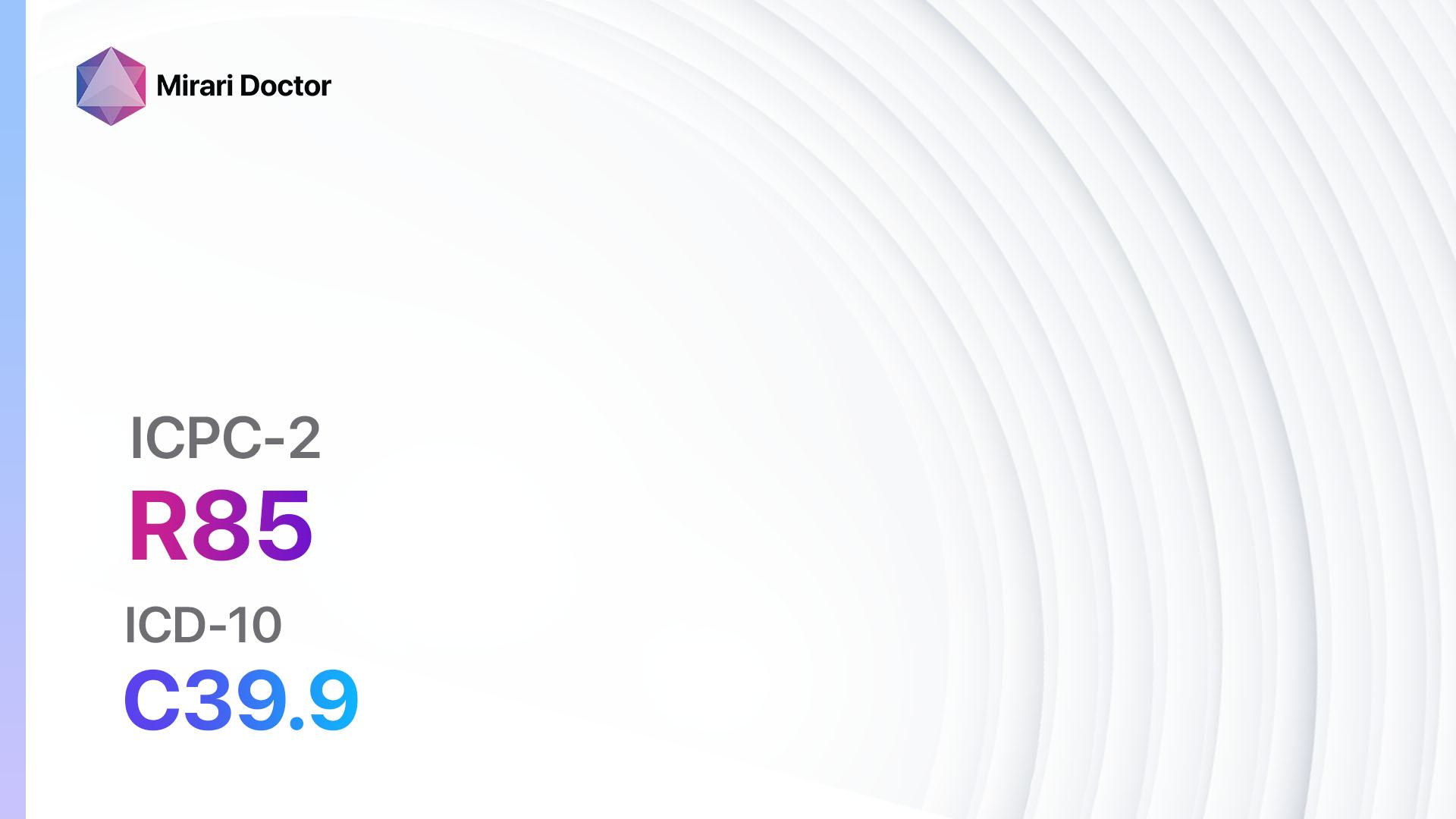
Introduction
Malignant neoplasm respiratory, other refers to a type of cancer that originates in the respiratory system, excluding the lungs. This condition is significant as it can lead to severe respiratory complications and has a high mortality rate.[1] The aim of this guide is to provide healthcare professionals with a comprehensive overview of the diagnosis and management of malignant neoplasm respiratory, other.
Codes
- ICPC-2 Code: R85 Malignant neoplasm respiratory, other
- ICD-10 Code: C39.9 Malignant neoplasm of lower respiratory tract, unspecified[2]
Symptoms
- Cough: Persistent cough that may be accompanied by blood or phlegm.
- Shortness of breath: Difficulty breathing or feeling breathless, especially with exertion.
- Chest pain: Sharp or dull pain in the chest that may worsen with deep breathing or coughing.
- Wheezing: High-pitched whistling sound when breathing.
- Hoarseness: Changes in voice, such as a raspy or strained voice.
- Weight loss: Unexplained weight loss, often accompanied by loss of appetite and fatigue.[3]
Causes
The exact causes of malignant neoplasm respiratory, other are not fully understood. However, several risk factors have been identified, including:
- Smoking: Tobacco smoke contains carcinogens that can damage the cells lining the respiratory system.
- Exposure to environmental toxins: Prolonged exposure to asbestos, radon, or certain chemicals can increase the risk of developing respiratory cancer.
- Family history: Individuals with a family history of respiratory cancer may have a higher risk of developing the condition.
- Age: The risk of respiratory cancer increases with age, with most cases occurring in individuals over 50 years old.
- Weakened immune system: People with weakened immune systems, such as those with HIV/AIDS or undergoing organ transplantation, may be more susceptible to developing respiratory cancer.[4]
Diagnostic Steps
Medical History
- Gather information about the patient’s smoking history, including the duration and intensity of smoking.
- Inquire about any occupational exposures to environmental toxins, such as asbestos or chemicals.
- Assess the patient’s family history of respiratory cancer.
- Evaluate the presence and duration of symptoms, such as cough, shortness of breath, and chest pain.
- Determine the patient’s overall health status and any pre-existing medical conditions.[5]
Physical Examination
- Perform a thorough examination of the respiratory system, including auscultation of the lungs for abnormal sounds.
- Check for any enlarged lymph nodes in the neck or other areas of the body.
- Assess the patient’s general appearance, including signs of weight loss or fatigue.
- Examine the throat and vocal cords for any abnormalities or hoarseness.[6]
Laboratory Tests
- Complete blood count (CBC): To assess for any abnormalities, such as anemia or infection.
- Liver function tests: To evaluate liver function, as respiratory cancer can metastasize to the liver.
- Kidney function tests: To assess kidney function, as certain cancer treatments may affect renal function.
- Tumor markers: Blood tests, such as carcinoembryonic antigen (CEA) or squamous cell carcinoma antigen (SCC), may be elevated in some cases of respiratory cancer.[7]
Diagnostic Imaging
- Chest X-ray: To visualize the lungs and identify any abnormalities, such as tumors or fluid accumulation.
- Computed tomography (CT) scan: Provides detailed images of the chest, allowing for a more accurate assessment of tumor size and location.
- Magnetic resonance imaging (MRI): May be used to further evaluate the extent of the tumor and its relationship to nearby structures.
- Positron emission tomography (PET) scan: Helps determine if the cancer has spread to other parts of the body, such as the lymph nodes or distant organs.[8]
Other Tests
- Bronchoscopy: A flexible tube with a camera is inserted into the airways to visualize the respiratory system and collect tissue samples for biopsy.
- Biopsy: A sample of the tumor tissue is taken and examined under a microscope to confirm the diagnosis of malignant neoplasm respiratory, other.
- Fine-needle aspiration (FNA): A thin needle is used to extract cells from a suspicious mass for further analysis.
- Molecular testing: Genetic testing may be performed to identify specific mutations or genetic markers that can guide treatment decisions.[9]
Follow-up and Patient Education
- Schedule regular follow-up appointments to monitor the patient’s response to treatment and assess for any recurrence or new symptoms.
- Provide education on the importance of smoking cessation and avoiding exposure to environmental toxins.
- Offer support resources, such as counseling or support groups, to help patients cope with the emotional and physical challenges of respiratory cancer.[10]
Possible Interventions
Traditional Interventions
Medications:
Top 5 drugs for Malignant neoplasm respiratory, other:
- Chemotherapy (e.g., Cisplatin, Carboplatin):
- Cost: Varies depending on the specific drug and treatment regimen.
- Contraindications: Severe kidney or liver dysfunction, pre-existing hearing loss.
- Side effects: Nausea, vomiting, hair loss, fatigue.
- Severe side effects: Bone marrow suppression, kidney damage, neuropathy.
- Drug interactions: Many potential drug interactions, including other chemotherapy agents and certain antibiotics.
- Warning: Regular monitoring of blood counts and kidney function is required.
- Targeted therapy (e.g., Erlotinib, Crizotinib):
- Cost: Varies depending on the specific drug and treatment regimen.
- Contraindications: Severe liver dysfunction, pre-existing lung disease.
- Side effects: Rash, diarrhea, liver toxicity.
- Severe side effects: Interstitial lung disease, heart problems.
- Drug interactions: Many potential drug interactions, including certain antibiotics and antifungal medications.
- Warning: Regular monitoring of liver function and lung function is required.
- Immunotherapy (e.g., Pembrolizumab, Nivolumab):
- Cost: Varies depending on the specific drug and treatment regimen.
- Contraindications: Severe autoimmune disease, pre-existing lung disease.
- Side effects: Fatigue, skin rash, diarrhea.
- Severe side effects: Pneumonitis, colitis, thyroid dysfunction.
- Drug interactions: Many potential drug interactions, including certain antibiotics and immunosuppressive medications.
- Warning: Regular monitoring of immune function and thyroid function is required.
- Radiation therapy:
- Cost: Varies depending on the treatment duration and facility.
- Contraindications: Pregnancy, certain genetic disorders.
- Side effects: Fatigue, skin irritation, difficulty swallowing.
- Severe side effects: Radiation pneumonitis, radiation esophagitis.
- Drug interactions: None.
- Warning: Regular monitoring of treatment response and potential long-term side effects is required.
- Palliative care:
- Cost: Varies depending on the specific services required.
- Contraindications: None.
- Side effects: None.
- Severe side effects: None.
- Drug interactions: None.
- Warning: Palliative care focuses on improving quality of life and managing symptoms, but does not treat the underlying cancer.
Alternative Drugs:
- Tyrosine kinase inhibitors (e.g., Gefitinib, Afatinib): Used in specific cases where genetic mutations are present.
- Angiogenesis inhibitors (e.g., Bevacizumab, Ramucirumab): Target blood vessel growth to inhibit tumor growth.
- Corticosteroids (e.g., Dexamethasone, Prednisone): May be used to reduce inflammation and manage symptoms.
Surgical Procedures:
- Surgical resection: Removal of the tumor and surrounding tissue to achieve complete or partial remission.
- Lobectomy: Removal of a lobe of the lung affected by the tumor.
- Pneumonectomy: Removal of the entire lung affected by the tumor.
- Wedge resection: Removal of a small, localized portion of the lung.
- Lymph node dissection: Removal of nearby lymph nodes to assess for spread of the cancer.
Alternative Interventions
- Acupuncture: May help manage symptoms such as pain and nausea. Cost: $60-$120 per session.
- Meditation and relaxation techniques: Can help reduce stress and improve overall well-being. Cost: Free to minimal cost.
- Herbal supplements: Some herbs, such as ginger or turmeric, may have anti-inflammatory properties. Cost: Varies depending on the specific supplement.
- Mind-body therapies: Techniques such as yoga or tai chi can improve physical and mental health. Cost: Varies depending on the specific class or instructor.
- Dietary modifications: A healthy diet rich in fruits, vegetables, and whole grains can support overall health. Cost: Varies depending on individual food choices.
Lifestyle Interventions
- Smoking cessation: Quitting smoking is crucial in reducing the risk of respiratory cancer and improving treatment outcomes. Cost: Varies depending on the chosen smoking cessation method.
- Regular exercise: Engaging in regular physical activity can improve overall fitness and reduce the risk of complications. Cost: Free to minimal cost.
- Healthy diet: Consuming a balanced diet with a focus on nutrient-rich foods can support overall health and well-being. Cost: Varies depending on individual food choices.
- Stress management: Techniques such as mindfulness, deep breathing, or engaging in hobbies can help reduce stress levels. Cost: Free to minimal cost.
- Avoidance of environmental toxins: Minimizing exposure to environmental toxins, such as secondhand smoke or occupational hazards, can reduce the risk of respiratory cancer. Cost: Varies depending on individual circumstances.
It is important to note that the cost ranges provided are approximate and may vary depending on the location and availability of the interventions.
Mirari Cold Plasma Alternative Intervention
Understanding Mirari Cold Plasma
- Safe and Non-Invasive Treatment: Mirari Cold Plasma is a safe and non-invasive treatment option for various skin conditions. It does not require incisions, minimizing the risk of scarring, bleeding, or tissue damage.
- Efficient Extraction of Foreign Bodies: Mirari Cold Plasma facilitates the removal of foreign bodies from the skin by degrading and dissociating organic matter, allowing easier access and extraction.
- Pain Reduction and Comfort: Mirari Cold Plasma has a local analgesic effect, providing pain relief during the treatment, making it more comfortable for the patient.
- Reduced Risk of Infection: Mirari Cold Plasma has antimicrobial properties, effectively killing bacteria and reducing the risk of infection.
- Accelerated Healing and Minimal Scarring: Mirari Cold Plasma stimulates wound healing and tissue regeneration, reducing healing time and minimizing the formation of scars.
Mirari Cold Plasma Prescription
Video instructions for using Mirari Cold Plasma Device – R85 Malignant neoplasm respiratory, other (ICD-10:C39.9)
| Mild | Moderate | Severe |
| Mode setting: 1 (Infection) Location: 5 (Lungs) Morning: 15 minutes, Evening: 15 minutes |
Mode setting: 1 (Infection) Location: 5 (Lungs) Morning: 30 minutes, Lunch: 30 minutes, Evening: 30 minutes |
Mode setting: 1 (Infection) Location: 5 (Lungs) Morning: 30 minutes, Lunch: 30 minutes, Evening: 30 minutes |
| Mode setting: 2 (Wound Healing) Location: 5 (Lungs) Morning: 15 minutes, Evening: 15 minutes |
Mode setting: 2 (Wound Healing) Location: 5 (Lungs) Morning: 30 minutes, Lunch: 30 minutes, Evening: 30 minutes |
Mode setting: 2 (Wound Healing) Location: 5 (Lungs) Morning: 30 minutes, Lunch: 30 minutes, Evening: 30 minutes |
| Mode setting: 3 (Antiviral Therapy) Location: 5 (Lungs) Morning: 15 minutes, Evening: 15 minutes |
Mode setting: 3 (Antiviral Therapy) Location: 5 (Lungs) Morning: 30 minutes, Lunch: 30 minutes, Evening: 30 minutes |
Mode setting: 3 (Antiviral Therapy) Location: 5 (Lungs) Morning: 30 minutes, Lunch: 30 minutes, Evening: 30 minutes |
| Mode setting: 7 (Immunotherapy) Location: 4 (Heart, Bile & Pancreas) Morning: 15 minutes, Evening: 15 minutes |
Mode setting: 7 (Immunotherapy) Location: 4 (Heart, Bile & Pancreas) Morning: 30 minutes, Lunch: 30 minutes, Evening: 30 minutes |
Mode setting: 7 (Immunotherapy) Location: 4 (Heart, Bile & Pancreas) Morning: 30 minutes, Lunch: 30 minutes, Evening: 30 minutes |
| Total Morning: 60 minutes approx. $10 USD, Evening: 60 minutes approx. $10 USD |
Total Morning: 120 minutes approx. $20 USD, Lunch: 120 minutes approx. $20 USD, Evening: 120 minutes approx. $20 USD, |
Total Morning: 120 minutes approx. $20 USD, Lunch: 120 minutes approx. $20 USD, Evening: 120 minutes approx. $20 USD, |
| Usual treatment for 7-60 days approx. $140 USD – $1200 USD | Usual treatment for 6-8 weeks approx. $2,520 USD – $3,360 USD |
Usual treatment for 3-6 months approx. $5,400 USD – $10,800 USD
|
 |
|
Use the Mirari Cold Plasma device to treat Malignant neoplasm respiratory, other effectively.
WARNING: MIRARI COLD PLASMA IS DESIGNED FOR THE HUMAN BODY WITHOUT ANY ARTIFICIAL OR THIRD PARTY PRODUCTS. USE OF OTHER PRODUCTS IN COMBINATION WITH MIRARI COLD PLASMA MAY CAUSE UNPREDICTABLE EFFECTS, HARM OR INJURY. PLEASE CONSULT A MEDICAL PROFESSIONAL BEFORE COMBINING ANY OTHER PRODUCTS WITH USE OF MIRARI.
Step 1: Cleanse the Skin
- Start by cleaning the affected area of the skin with a gentle cleanser or mild soap and water. Gently pat the area dry with a clean towel.
Step 2: Prepare the Mirari Cold Plasma device
- Ensure that the Mirari Cold Plasma device is fully charged or has fresh batteries as per the manufacturer’s instructions. Make sure the device is clean and in good working condition.
- Switch on the Mirari device using the power button or by following the specific instructions provided with the device.
- Some Mirari devices may have adjustable settings for intensity or treatment duration. Follow the manufacturer’s instructions to select the appropriate settings based on your needs and the recommended guidelines.
Step 3: Apply the Device
- Place the Mirari device in direct contact with the affected area of the skin. Gently glide or hold the device over the skin surface, ensuring even coverage of the area experiencing.
- Slowly move the Mirari device in a circular motion or follow a specific pattern as indicated in the user manual. This helps ensure thorough treatment coverage.
Step 4: Monitor and Assess:
- Keep track of your progress and evaluate the effectiveness of the Mirari device in managing your Malignant neoplasm respiratory, other. If you have any concerns or notice any adverse reactions, consult with your health care professional.
Note
This guide is for informational purposes only and should not replace the advice of a medical professional. Always consult with your healthcare provider or a qualified medical professional for personal advice, diagnosis, or treatment. Do not solely rely on the information presented here for decisions about your health. Use of this information is at your own risk. The authors of this guide, nor any associated entities or platforms, are not responsible for any potential adverse effects or outcomes based on the content.
Mirari Cold Plasma System Disclaimer
- Purpose: The Mirari Cold Plasma System is a Class 2 medical device designed for use by trained healthcare professionals. It is registered for use in Thailand and Vietnam. It is not intended for use outside of these locations.
- Informational Use: The content and information provided with the device are for educational and informational purposes only. They are not a substitute for professional medical advice or care.
- Variable Outcomes: While the device is approved for specific uses, individual outcomes can differ. We do not assert or guarantee specific medical outcomes.
- Consultation: Prior to utilizing the device or making decisions based on its content, it is essential to consult with a Certified Mirari Tele-Therapist and your medical healthcare provider regarding specific protocols.
- Liability: By using this device, users are acknowledging and accepting all potential risks. Neither the manufacturer nor the distributor will be held accountable for any adverse reactions, injuries, or damages stemming from its use.
- Geographical Availability: This device has received approval for designated purposes by the Thai and Vietnam FDA. As of now, outside of Thailand and Vietnam, the Mirari Cold Plasma System is not available for purchase or use.
References
- Bray F, Ferlay J, Soerjomataram I, Siegel RL, Torre LA, Jemal A. Global cancer statistics 2018: GLOBOCAN estimates of incidence and mortality worldwide for 36 cancers in 185 countries. CA Cancer J Clin. 2018;68(6):394-424.
- World Health Organization. International Statistical Classification of Diseases and Related Health Problems, 10th Revision (ICD-10). Geneva: WHO; 2019.
- Latimer KM, Mott TF. Lung cancer: diagnosis, treatment principles, and screening. Am Fam Physician. 2015;91(4):250-256.
- Alberg AJ, Brock MV, Ford JG, Samet JM, Spivack SD. Epidemiology of lung cancer: Diagnosis and management of lung cancer, 3rd ed: American College of Chest Physicians evidence-based clinical practice guidelines. Chest. 2013;143(5 Suppl):e1S-e29S.
- Rivera MP, Mehta AC, Wahidi MM. Establishing the diagnosis of lung cancer: Diagnosis and management of lung cancer, 3rd ed: American College of Chest Physicians evidence-based clinical practice guidelines. Chest. 2013;143(5 Suppl):e142S-e165S.
- Spiro SG, Gould MK, Colice GL; American College of Chest Physicians. Initial evaluation of the patient with lung cancer: symptoms, signs, laboratory tests, and paraneoplastic syndromes: ACCP evidenced-based clinical practice guidelines (2nd edition). Chest. 2007;132(3 Suppl):149S-160S.
- Grunnet M, Sorensen JB. Carcinoembryonic antigen (CEA) as tumor marker in lung cancer. Lung Cancer. 2012;76(2):138-143.
- Nair VS, Sundaram V, Desai M, Gould MK. Accuracy of models to identify lung nodule cancer risk in the National Lung Screening Trial. Am J Respir Crit Care Med. 2018;197(9):1220-1223.
- Lindeman NI, Cagle PT, Aisner DL, et al. Updated Molecular Testing Guideline for the Selection of Lung Cancer Patients for Treatment With Targeted Tyrosine Kinase Inhibitors: Guideline From the College of American Pathologists, the International Association for the Study of Lung Cancer, and the Association for Molecular Pathology. J Mol Diagn. 2018;20(2):129-159.
- Postmus PE, Kerr KM, Oudkerk M, et al. Early and locally advanced non-small-cell lung cancer (NSCLC): ESMO Clinical Practice Guidelines for diagnosis, treatment and follow-up. Ann Oncol. 2017;28(suppl_4):iv1-iv21.
Related articles
Made in USA


